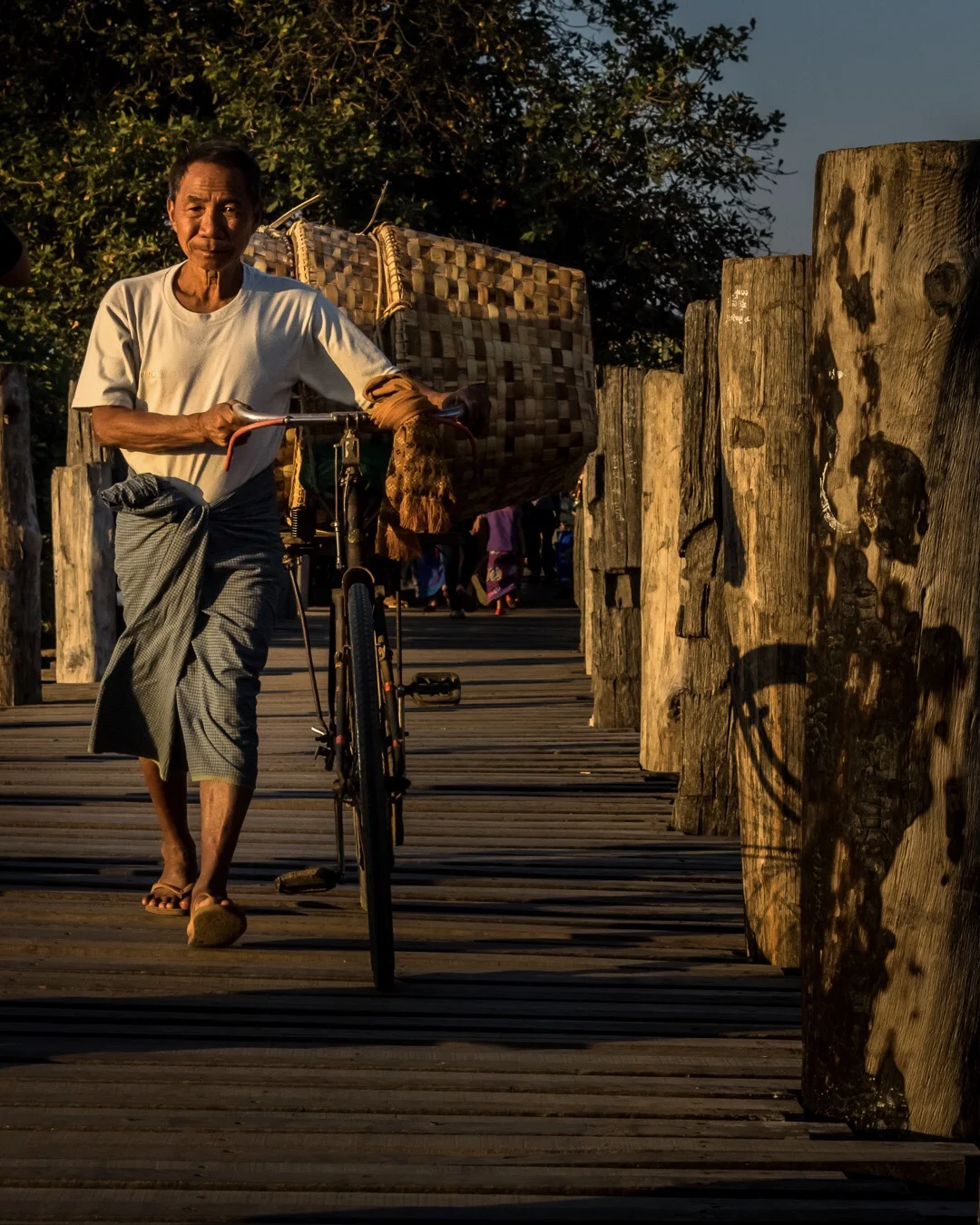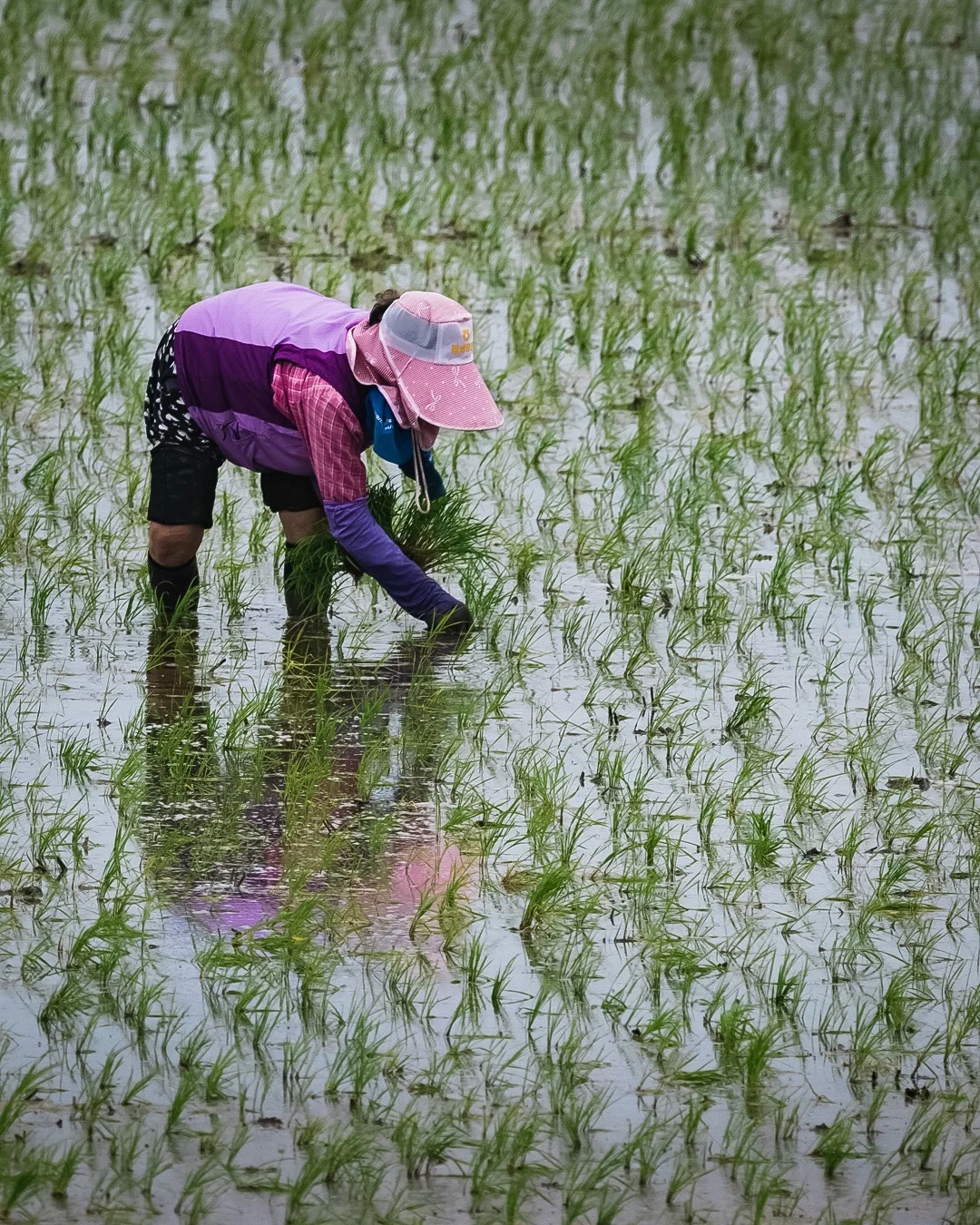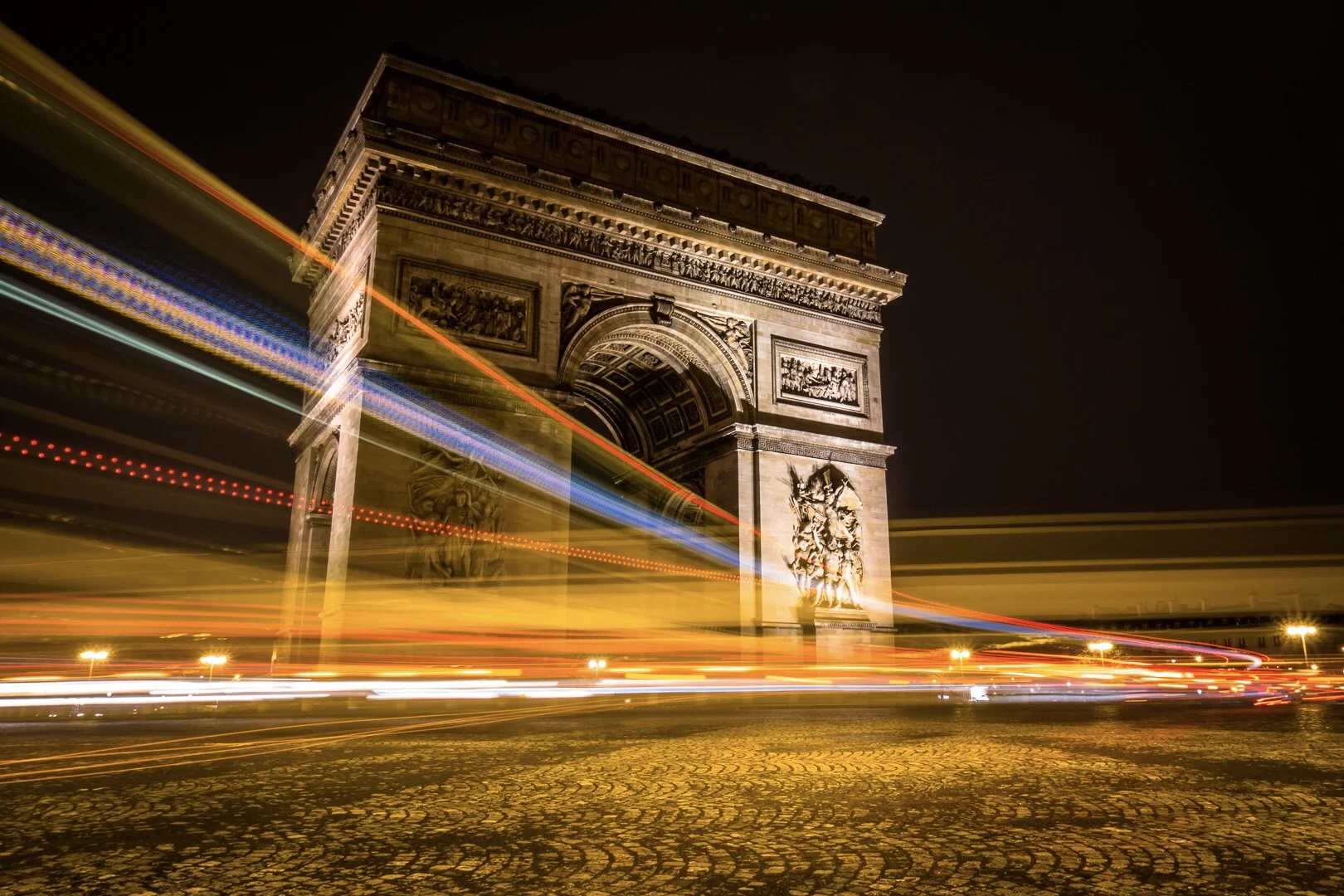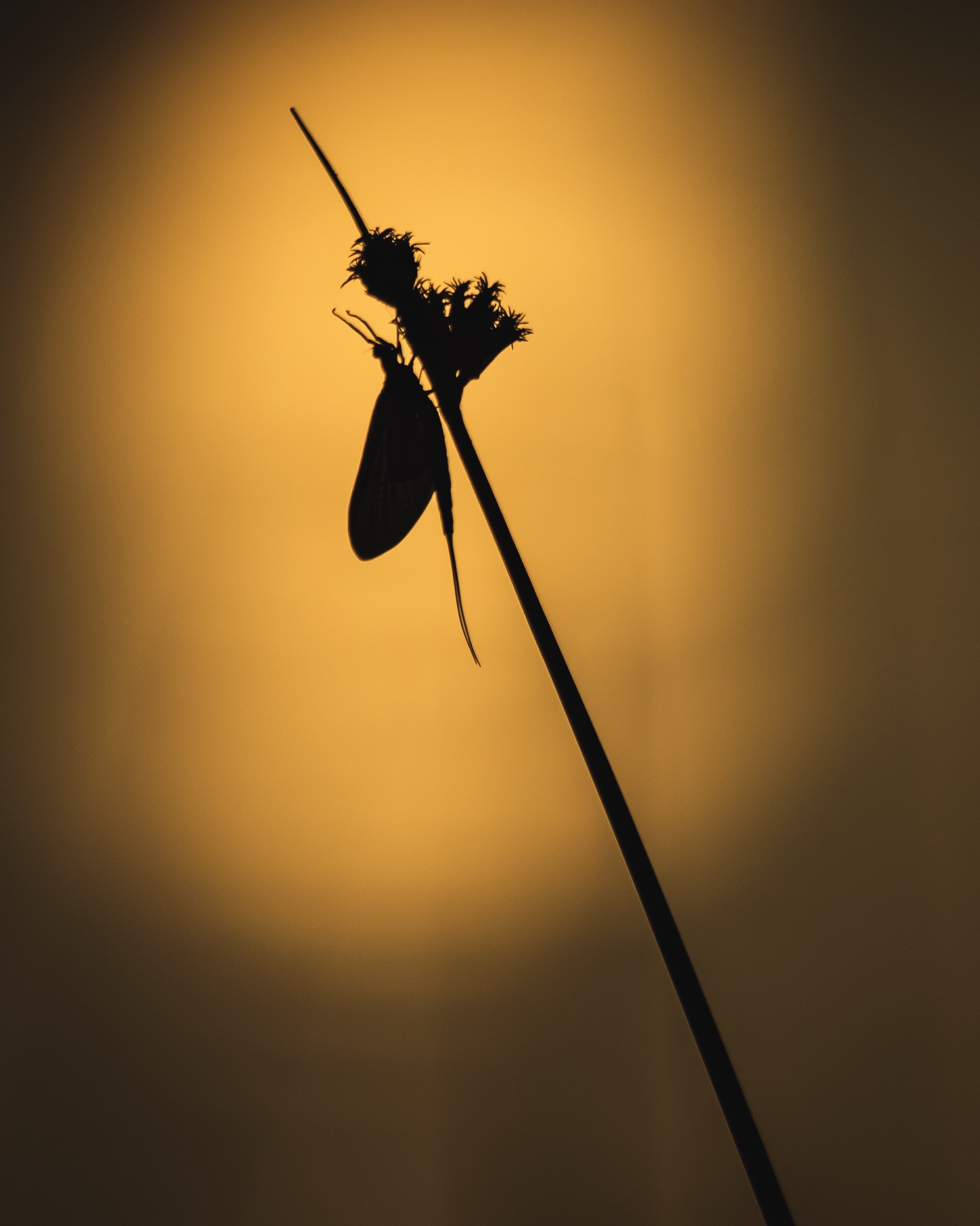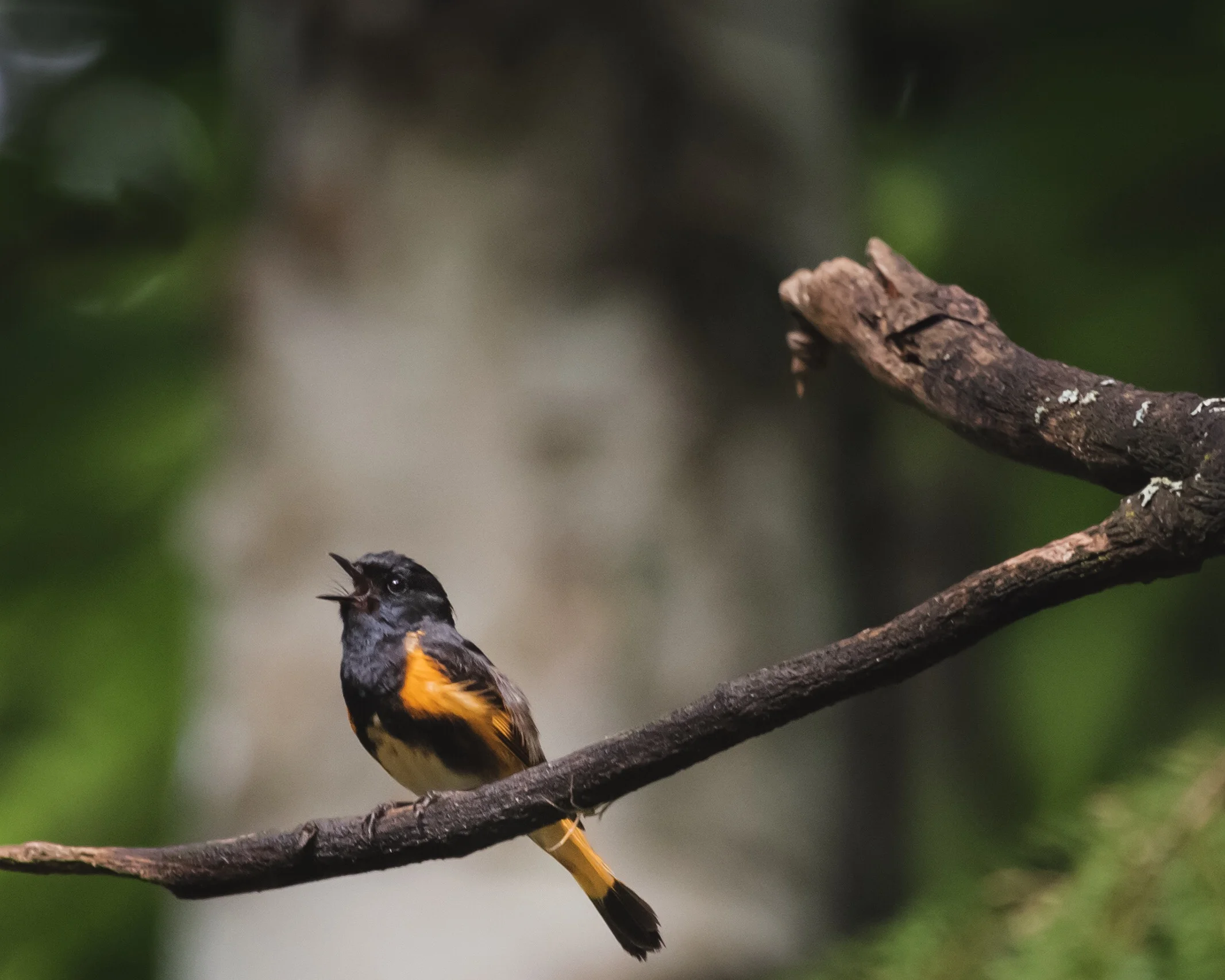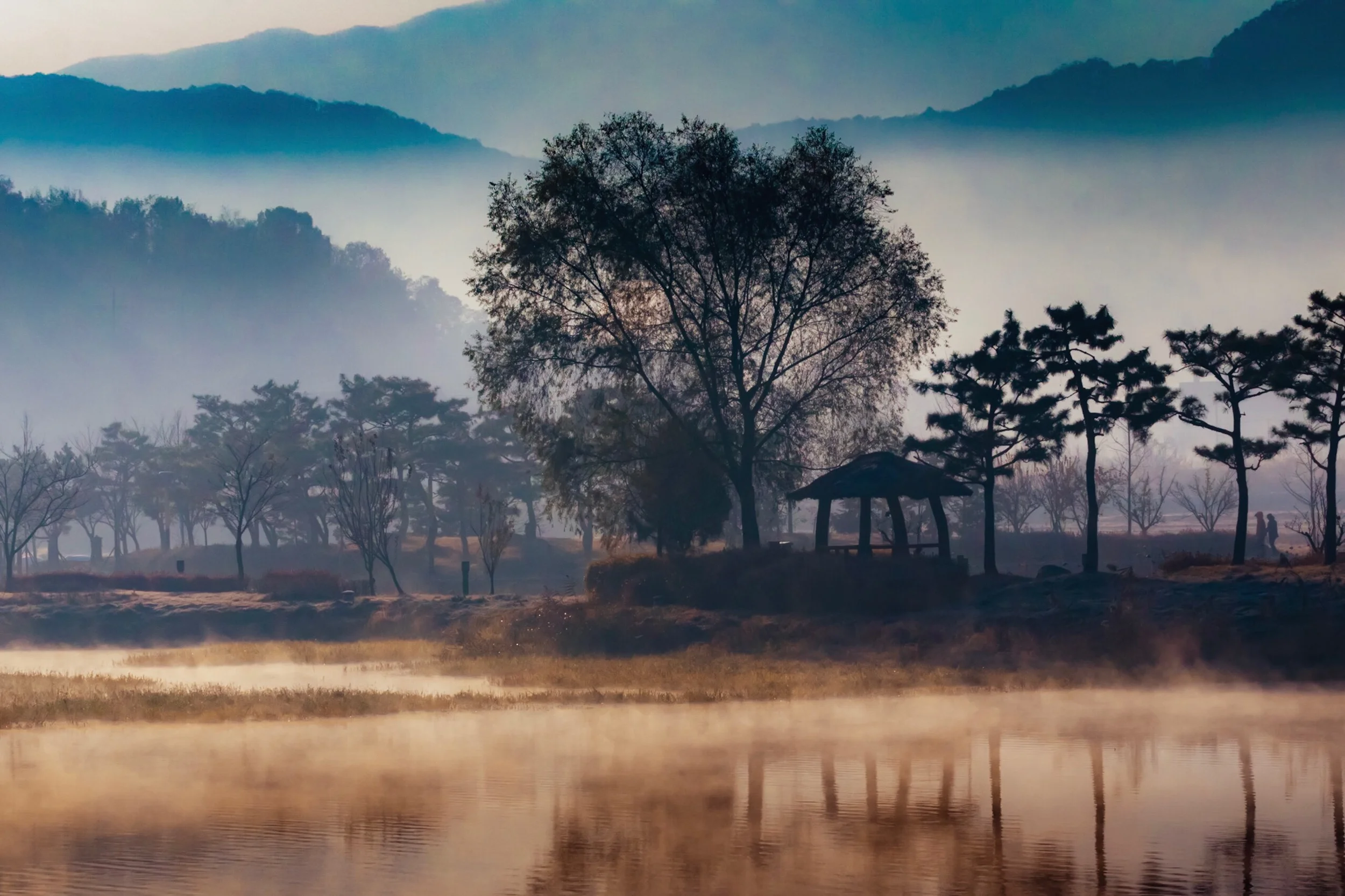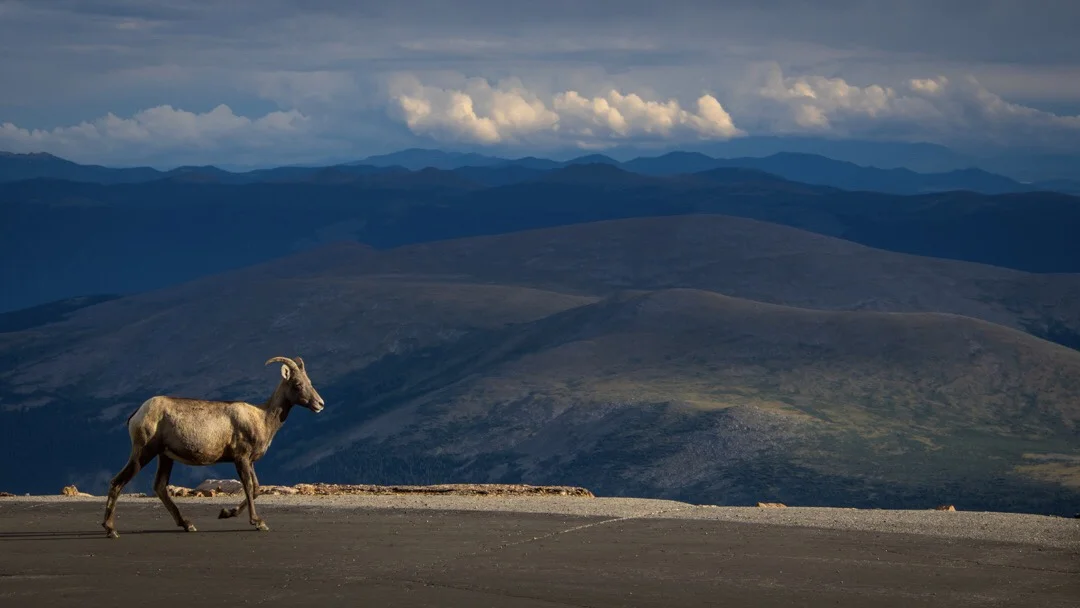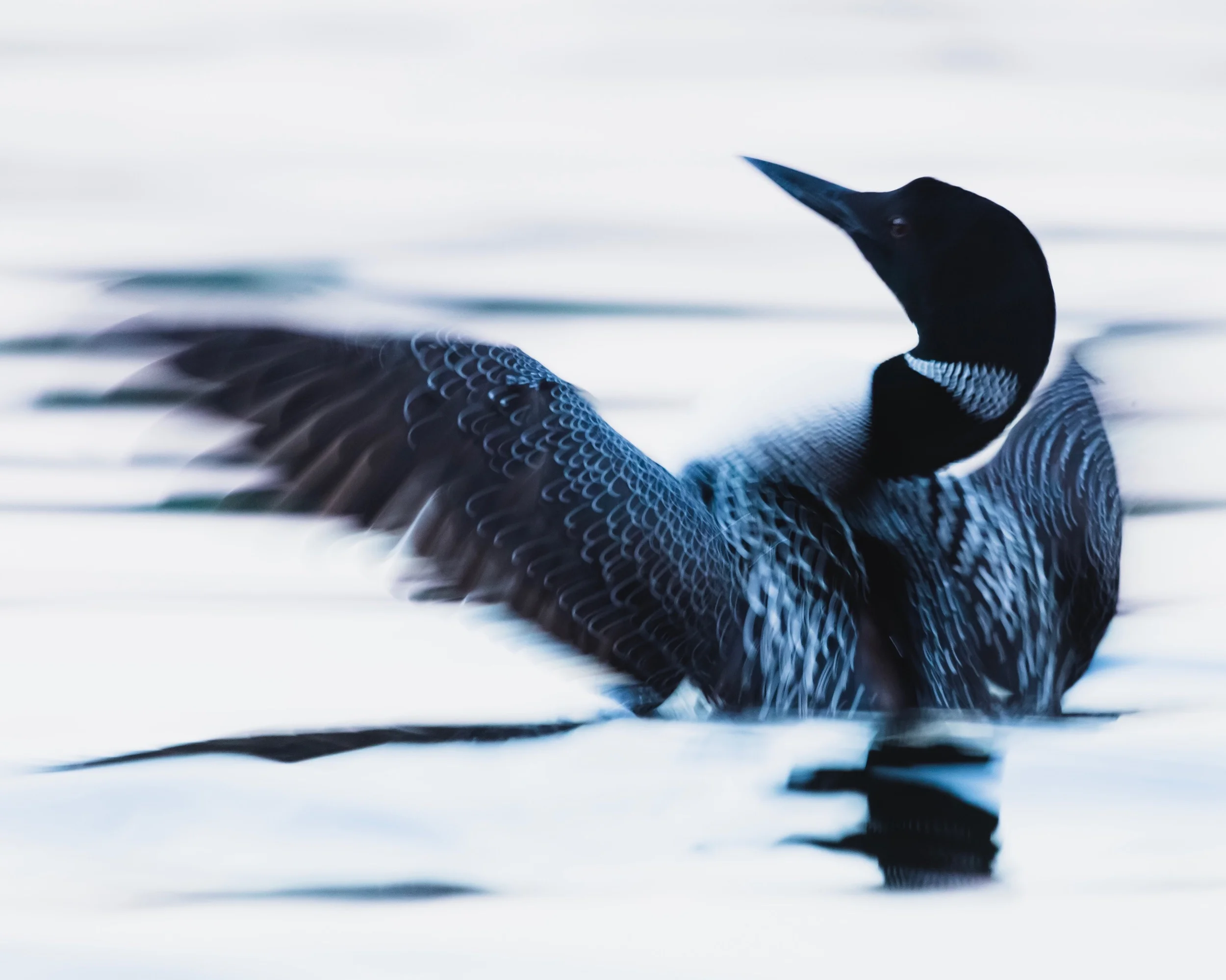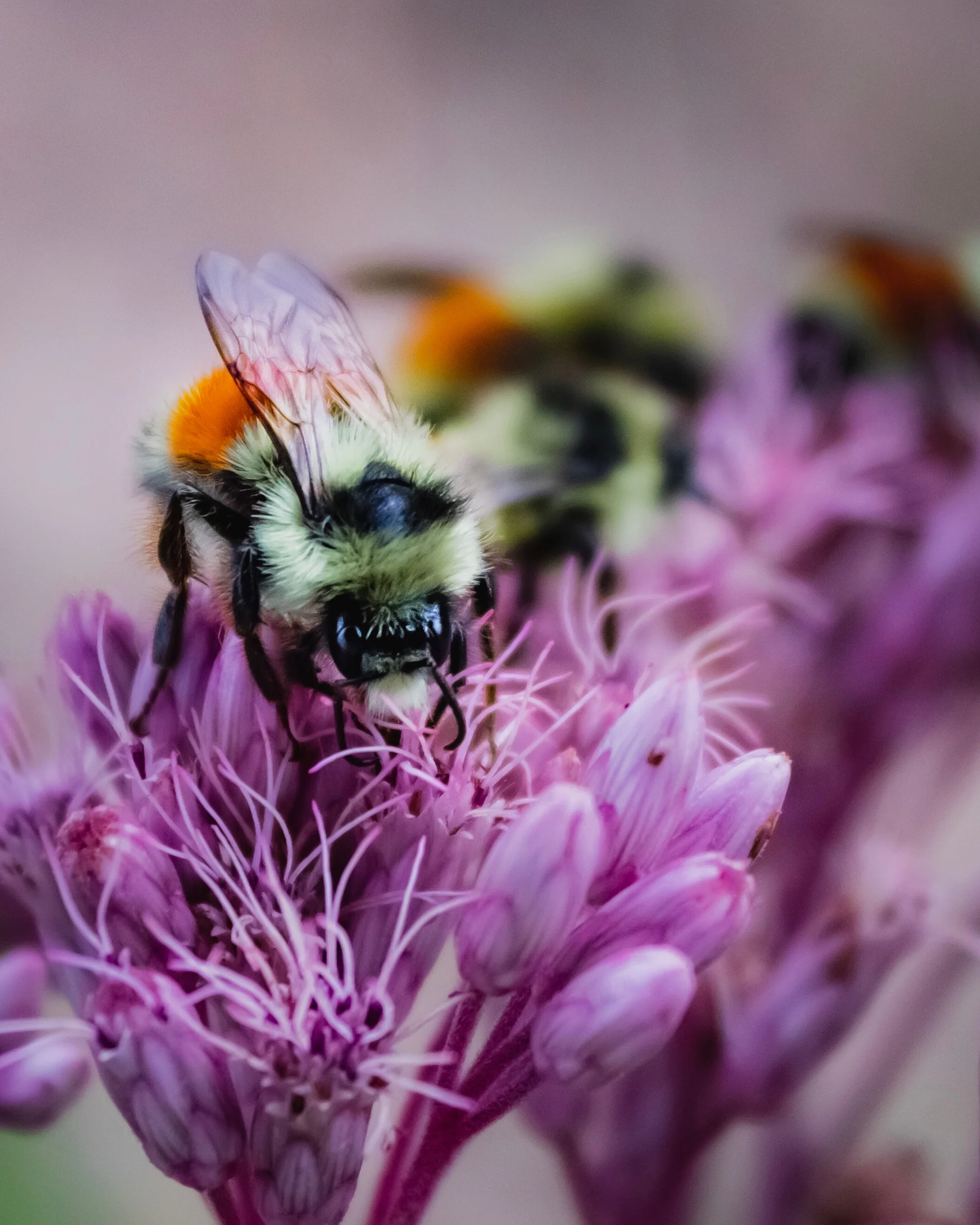A Passport and a Past Life: A Global Wildlife Photography Exhibit with Local Roots
"A Passport and a Past Life" is a photography exhibit exploring the intersection of science, travel, and storytelling — shaped by my background as a wildlife biologist, my current role as a biology and environmental science teacher, and my journey across diverse ecosystems around the world.
Originally exhibited at the Copper Country Community Arts Center in Hancock, Michigan (July 2019), this collection blends global imagery with a message rooted in ecological awareness and environmental education. It reflects the same themes I brought into my AP Environmental Science classroom — connecting students (and now viewers) to the complex relationship between human progress and the decline of global biodiversity.
The exhibit traces a familiar arc: from species that have adapted to human-altered landscapes, to those pushed to the brink by our expanding footprint. It touches on the rise of urbanization, habitat loss, the global impacts of population growth, and the changing fate of species like amphibians, bees, and marine life. Yet, woven through the urgency is something just as vital — hope. Sometimes it emerges from innovation, and sometimes from unexpected resilience — like finding a critically endangered species thriving in a new environment far from its native range.
This collection is both a reflection and an invitation: to see, to question, and to hope — not just as photographers or scientists, but as participants in the story of our changing planet.
Dusk On U Bein Bridge
U Bein Bridge, Myanmar – A Glimpse of Timeless Travel
Spanning the calm waters of Taungthaman Lake near Amarapura, just outside Mandalay in central Myanmar, U Bein Bridge is widely considered the world’s oldest and longest teakwood footbridge. Built in the mid-1800s using reclaimed timber from a former royal palace, this iconic structure remains a vital pedestrian route for local residents. In this photo—chosen to open A Passport and a Past Life—a man walks his bicycle, laden with handmade baskets, toward the tourist concession area. For me, this image captured the enduring rhythms of pre-industrial life I witnessed across rural Myanmar: quiet, practical, human-powered movement through landscapes steeped in history and tradition.
Location: U Bein Bridge, Mandalay, Myanmar
Camera: Canon EOS 7D Mark II
Lens: Canon EF-S 18-55, f/3.5-5.6 IS II
Focal Length: 47mm
ISO: 400
Exposure: 1/320 sec @ f/11
Support: Hand-held
Planting Rice - South Korea
Hand-Planting Rice in Rural South Korea – Enduring Traditions in Modern Fields
Despite the rise of mechanized agriculture, wet rice farming in rural South Korea remains deeply labor-intensive. After sowing rice in seedbeds during the early spring, farmers transplant the young seedlings into flooded paddies. But modern machinery doesn’t always catch every patch. In this image, local agricultural workers follow behind the equipment, painstakingly planting each missed seedling by hand—ensuring that every square meter of the rice field yields a harvest.
This photo, part of A Passport and a Past Life, reminds me of the physical dedication and quiet resilience required in daily life before the conveniences of modern society. Watching farmers crouch in the mud to hand-plant rice one by one was a powerful reflection of how ancient rhythms of labor continue to shape communities across Asia.
Location: Pyeongtaek-si, Gyeongi-do, South Korea
Camera: Canon EOS 7D Mark II
Lens: Canon EF100-400mm f/4.5-5.6L IS USM
Focal Length: 400mm
ISO: 320
Exposure: 1/640 sec @ f/8.0
Support: Hand-held
Arc de Triomphe Light Trails
Arc de Triomphe Light Trails – Paris, France
While visiting Paris during the Christmas season, I discovered our lodging was just a few blocks from one of the city's most iconic monuments: the Arc de Triomphe de l’Étoile. Naturally, I felt compelled to capture a long-exposure shot of this historic Parisian landmark, complete with car light trails circling the Place Charles de Gaulle. On my first morning—armed with a tripod and some stubborn enthusiasm—I ventured out into a steady drizzle to beat the tourist crowds. After a few test shots and a better understanding of the traffic flow, I landed on this image: glowing headlights and tail lights spiraling around a symbol of national pride.
Sure, it’s a bit of a photographic cliché—but when in Paris, one simply must photograph a few classic landmarks and make a brave attempt at the language…cliché.
The Arc de Triomphe—bathed in artificial light and framed by the swirl of modern motion—represents the convergence of historic grandeur and human innovation, and stands as a fitting metaphor for what Paris has always stood for: art, progress, memory, and motion.
Location: Champs Elyse, Paris, France
Camera: Sony DSC-RX100 Mark V
Lens: Canon 24-70mm, f/1.8-2.8
Focal Length: 8.8mm
ISO: 80
Exposure: 15 sec @ f/11
Support: MeFoto Carbon Fiber Tripod
Hexagenia Silhouette
Giant Mayfly on Bulrush – Upper Peninsula of Michigan
A Giant Mayfly (Hexagenia limbata) clings to a stalk of Hardstem Bulrush (Schoenoplectus acutus) along a freshwater shoreline in Michigan’s Upper Peninsula. During peak emergence, clouds of mayflies rise and fall in rhythmic pulses, signaling the final act in a long aquatic life cycle. These adults—born without functioning mouthparts—cannot feed. Their sole purpose: find a mate, reproduce, and complete the cycle before dying just a day or two later.
In the cold waters of northern lakes and rivers, their nymph stage can last up to two years before transformation. Though fleeting, their synchronized emergence supports entire food webs and signals clean, healthy water. As long as we protect these aquatic ecosystems, species like Hexagenia limbata will continue to thrive alongside us.
Location: Au Train Township, Michigan
Camera: Canon EOS 7D Mark II
Lens: Canon EF100-400mm f/4.5-5.6L IS USM
Focal Length: 400mm
ISO: 100
Exposure: 1/4000 sec @ f/4.6
Support: Hand-held
Spotlit Spot-billed Duck
Spot-Billed Duck at Sunrise – Sinjeongho Lake, Asan, South Korea
On a cool morning at Sinjeongho Lake in Asan, South Korea, dense valley fog lingered as the sun began to rise—casting warm light across the still water. Known for its year-round bird activity, this freshwater lake is a reliable spot for birdwatching in South Chungcheong Province. In this photo, a Spot-billed Duck (Anas zonorhyncha)—one of South Korea’s most common and adaptable waterfowl species—glows in the early light, its plumage catching the sun against the dim water.
This image reminds me how certain species, like this duck, have learned to thrive in heavily developed landscapes. South Korea, with over 52 million people living in an area roughly the size of Indiana, offers a striking example of how wildlife and urban life can coexist—when ecosystems are allowed the space and water they need to function.
Location: Sinjeong-ho, Asan-si, Chungcheongnam-do, South Korea
Camera: Canon EOS 7D Mark II
Lens: Canon EF100-400mm f/4.5-5.6L IS USM
Focal Length: 400mm
ISO: 500
Exposure: 1/1000 sec @ f/8.0
Support: Hand-held
Expected Territory
American Redstart on Watch – Upper Peninsula, Michigan
Near our driveway in Michigan’s Upper Peninsula, I had been eyeing this branch for days—certain it would become a perch for a songbird at dusk. With a white birch in the background and the branch perfectly positioned, I imagined a colorful species landing there and standing out beautifully against the soft tones. Finally, nearly a week later and just after a summer rain, a male American Redstart (Setophaga ruticilla) flew in and began to sing—exactly as I had hoped. I love when wildlife meets expectations.
Although its name comes from its resemblance to European and Asian redstarts, the American Redstart is actually a New World warbler, not closely related to its Old World namesakes—just like the American Robin, which is actually a thrush. This species prefers open woodlands and thrives in the transitional edge habitats that human development often creates, making it a regular and resilient presence in partially forested landscapes across the Upper Midwest.
Location: Au Train Township, Michigan
Camera: Canon EOS 7D Mark II
Lens: Canon EF100-400mm f/4.5-5.6L IS USM
Focal Length: 400mm
ISO: 1600
Exposure: 1/320 sec @ f/6.3
Support: Hand-held
Sinjeong-ho Morning Fog
Tranquility at Sinjeongho Lake – Asan, South Korea
Sometimes, moments of peace emerge right in the heart of urban life. I came across this serene scene while walking the 4.5-kilometer path that encircles Sinjeongho Lake in Asan, South Korea, about thirty minutes after sunrise. Though surrounded by city bustle, the lake offers a surprisingly immersive experience. Along the paved path, discreet weatherproof speakers—cleverly disguised as stones and lanterns—play a continuous stream of soft classical music. As one speaker fades, another gently takes over, masking traffic noise while preserving the visual stillness of the landscape.
This photo, featured in A Passport and a Past Life, captures that unexpected harmony: a reservoir in the middle of a city, blending human design with natural beauty. It’s not wilderness in any sense, but the calming atmosphere created here reflects how thoughtfully integrated public spaces can support reflection, mental well-being, and quiet connection—even within a densely populated area like Asan.
Location: Sinjeong-ho, Asan-si, Chungcheongnam-do, South Korea
Camera: Canon EOS 7D Mark II
Lens: Canon EF100-400mm f/4.5-5.6L IS USM
Focal Length: 100mm
ISO: 500
Exposure: 1/640 sec @ f/18
Support: Hand-held
Mt. Evans Sunset Stroll
Bighorn Sheep at Sunset – Mt. Evans, Colorado
The Rocky Mountain Bighorn Sheep (Ovis canadensis) has been revered by Indigenous peoples and settlers alike for centuries and remains a powerful symbol of wilderness across the American West. It’s the official state animal of Colorado and the emblem of Colorado Parks and Wildlife—fitting for a species that embodies rugged, high-altitude resilience.
I encountered this ewe walking along the paved road near the summit of Mt. Evans, one of the highest drivable roads in North America. Illuminated by the setting sun and framed by the iconic “purple mountain majesties,” she stood out in perfect contrast to the asphalt beneath her hooves. The moment captured a compelling contradiction: a wild, iconic species navigating modern infrastructure in a place that once felt untouchable.
Location: Mt. Evans, Colorado
Camera: Canon EOS 7D Mark II
Lens: Canon EF-S 18-55, f/5-5.6 IS II
Focal Length: 55mm
ISO: 100
Exposure: 1/250 sec @ f/7.1
Support: Hand-held
Sunrise on the Setsuri
Red-Crowned Cranes at Sunrise – Setsuri River, Hokkaido, Japan
In February 2016, my wife Kay and I traveled to Hokkaido, Japan, to witness the winter courtship displays of the Japanese Red-crowned Crane (Grus japonensis), known locally as Tancho. With only around 2,800 individuals remaining in the wild—and nearly half of those in Japan—Tancho are one of the world’s most endangered crane species. Despite their fragile status, they are revered throughout Japanese culture as symbols of happiness, longevity, and fidelity. Their graceful images appear on everything from artwork and kimonos to shrines and chopsticks.
But this visual reverence hides a complex truth. For centuries, Tancho were hunted for their meat, once reserved for emperors, and pushed from their wetlands by agriculture and development. Like so many wild species, what they represent in symbolism often contrasts sharply with their lived reality.
This photograph was taken on our first morning in Japan, just downstream from the Otowa-bashi Bridge along the Setsuri River, where the cranes roost overnight during winter. We arrived before dawn and were met with a glowing sunrise and subzero temperatures—an unforgettable introduction to one of the most iconic and vulnerable birds in East Asia.
Location: Setsuri River, Hokkaido, Japan
Camera: Canon EOS Digital Rebel XTi
Lens: Canon EF100-400mm f/4.5-5.6L IS USM
Focal Length: 320mm
ISO: 100
Exposure: 1/1000 sec @ f/10
Support: Swarovski Steel Tripod
Abstract Wilderness Icon
Common Loon on a Michigan Lake – Upper Peninsula
The Common Loon (Gavia immer) is one of the most iconic symbols of wilderness in the northern United States and holds special cultural significance in Michigan. Its haunting call echoes across inland lakes and conjures images of solitude and serenity. Yet despite its reputation, this obligate piscivore—a fish-eating specialist—remains surprisingly uncommon in many parts of Michigan where suitable habitat should exist.
Several modern stressors contribute to its decline. Loons are highly vulnerable to lead poisoning, often dying after ingesting small lead sinkers and jigs. Mercury contamination, amplified in acidic waters like those common in the Upper Peninsula, leads to reproductive issues and physiological harm due to bioaccumulation in fish. Invasive species such as the round goby have also been linked to outbreaks of Type E botulism, which has killed thousands of waterbirds over the past decade. Nesting success is further threatened by shoreline development, which reduces the quiet, undisturbed areas loons need for breeding.
This photo was taken while riding a pontoon boat with friends on a lake in Michigan’s Upper Peninsula. Given all the ecological pressures this species faces, I felt incredibly fortunate to see one up close—a fleeting but powerful reminder of the resilience of life and the fragility of our freshwater ecosystems.
Location: Au Train Lake, Michigan
Camera: Canon EOS 7D Mark II
Lens: Canon EF100-400mm f/4.5-5.6L IS USM
Focal Length: 400mm
ISO: 1600
Exposure: 1/40 sec @ f/5.6
Support: Hand-held
Orange-belted Bumblebees on Joe-Pye Weed
Orange-belted Bumblebees on Joe-Pye Weed – Upper Midwest, USA
These Orange-belted Bumblebees—also known as Tri-colored Bumblebees (Bombus ternarius)—are feeding on blooming Joe-Pye Weed (Eutrochium purpureum), a native wildflower commonly found in meadows and wetlands across the Upper Midwest. Known for their striking black, orange, and yellow coloration, these bumblebees are important native pollinators and tend to be notably docile, rarely stinging unless seriously provoked.
To illustrate just how gentle they can be: the week before I took this photo, my parents' puppy mouthed one in the yard—flipping it around repeatedly—and the bee still didn’t sting. If they do choose to defend themselves, Bombus ternarius can sting more than once without dying, since their stingers lack the barbs that typically anchor honeybee stingers in flesh.
In a time when global bee populations are declining due to habitat loss, pesticides, and climate stress, seeing a healthy number of native bumblebees buzzing around our yard last summer felt like a small but meaningful sign of hope.
Location: Au Train Township, Michigan
Camera: Canon EOS 7D Mark II
Lens: Canon EF-S 18-55, f/5-5.6 IS II
Focal Length: 55mm
ISO: 1600
Exposure: 1/1250 sec @ f/5.6
Support: Hand-held
Vinous-throated Parrotbill
A Vinous-throated Parrotbill (Sinosuthora webbiana). The name "vinous" means "wine-colored"...though, it is not overly evident with this individual that it's throat has a pinkish hue. This species is both gregarious and ubiquitous within human-altered habitats. I would estimate that there was at least 100 birds in this individual's flock. They were all flitting about in thick patches of reed grass, chattering and feeding as they moved about. They are tiny and quick, so most of my shots were either out of focus or a blur of tail feathers. Finally, after about 20 minutes of following the flock through the dew-covered grasses and shrubs, this little guy slowed down for about 3 seconds...and politely posed.
Location: Sinjeong-ho, Asan-si, Chungcheongnam-do, South Korea
Camera: Canon EOS 7D Mark II
Lens: Canon EF100-400mm f/4.5-5.6L IS USM
Focal Length: 400mm
ISO: 500
Exposure: 1/320 sec @ f/5.6
Support: Hand-held
Grey Heron Sunrise Silhouette
Location: Changyong-ri, South Korea
Camera: Canon EOS 7D Mark II
Lens: Canon EF100-400mm f/4.5-5.6L IS USM
Focal Length: 400mm
ISO: 100
Exposure: 1/1000 sec @ f/7.1
Support: Hand-held
Hard at Work
Location: Ubud, Bali, Indonesia
Camera: Canon EOS 7D Mark II
Lens: Canon EF100-400mm f/4.5-5.6L IS USM
Focal Length: 320mm
ISO: 1000
Exposure: 1/160 sec @ f/5.6
Support: Hand-held
Negligence
Location: Sinbong-ri, South Korea
Camera: Canon EOS 7D Mark II
Lens: Canon EF50mm f1.8 STM
Focal Length: 50mm
ISO: 200
Exposure: 1/400 sec @ f/6.3
Support: Hand-held
Paradise Lost
Location: Tulamben, Bali, Indonesia
Camera: Canon EOS 7D Mark II
Lens: Canon EF-S 18-55, f/5-5.6 IS II
Focal Length: 29mm
ISO: 100
Exposure: 1/100 sec @ f/11
Support: MeFoto Carbon Fiber Tripod
Jagalchi Nocturnal
Jagalchi Market, in Busan, is South Korea's largest seafood market. They sell live, fresh, and dried seafood of all varieties. The seafood is available to package up and take home or it can be prepared and eaten at the market. Most of the people who sell fish at this market are women (the Jagalchi ajumma), though that did not surprise me, since we live in a farming town and (with only a few exceptions) most of the people working in the gardens, paddies, and orchards are also women. Our initial plan was to have dinner here; however, we arrived late and all of the Jagalchi ajumma were doing the hard sell on everything to try and not have to store their stock overnight. Taking pics was even a challenge because I was constantly being "sold to."
I am continually reminded of the intense negative impact we are having on marine species as our population grows and we expand our search to satiate our need for high-quality foods. Growing up among the Great Lakes I was well aware of the severe impact we have had on that ecosystem over the past 200 years. It was not until I began traveling to other places that I discovered that the affect we have had on the Great Lakes is minimal when compared to our impact on the world fisheries.
Location: Jagalchi Fish Market, Busan, South Korea
Camera: Canon EOS 7D Mark II
Lens: Canon EF-S 18-55, f/5-5.6 IS II
Focal Length: 40mm
ISO: 800
Exposure: 1/80 sec @ f/5.0
Support: Hand-held
Lin Heung Tea House
The Lin Heung (Fragrant Lotus) Tea House is famous for its traditional Chinese dim sum and variety of teas. We nearly walked right past it while trying to dodge taxis. However, I turned around wondering what another photographer was taking pictures of. It turned out he was focused on the warm glow reflecting off the face of the woman in this picture. For, me though I was struck by how much red was surrounding us at that moment.
As our species’ population continues to grow, scenes such as this begin to dominate the landscape, in order to accommodate our needs and wants. Yet, through proper planning and development, we may be able to grow our cities with minimal outward expansion, maintain our agricultural lands, and conserve wild lands critical for maintaining vast biodiversity around the world.
Location: Lin Heung Tea House, Sheung Wan, Hong Kong
Camera: Sony DSC-RX100 Mark V
Lens: 24-70mm, f/1.8-2.8
Focal Length: 8.8mm
ISO: 4000
Exposure: 1/30 sec @ f/5.0
Support: Hand-held
Endangered But Thriving
The Yellow-crested Cockatoo (Cacatua sulphurea) is a critically endangered species in its native range. However, there are about 200 of these birds which have taken up residence in Hong Kong and they are actually thriving. This is a somewhat unusual circumstance because most invasive species (wherever they may be) are usually species that not only thrive in their adopted home ranges but also in their native home ranges. The dilemma for this species is that the cause of their endangerment is largely trapping for the pet industry, which is what has brought these birds to their new range in the first place.
I chose to close this exhibit with this picture because I recognize it as a sign of hope. This is a species which has been on the brink of extinction for some time. However, it has gained a foothold in an area of the world most unexpected.
Location: Hong Kong Park, Hong Kong
Camera: Canon EOS 7D Mark II
Lens: Canon EF100-400mm f/4.5-5.6L IS USM
Focal Length: 400mm
ISO: 250
Exposure: 1/400 sec @ f/7.1
Support: Hand-held
